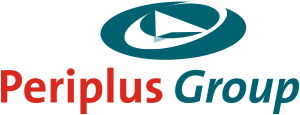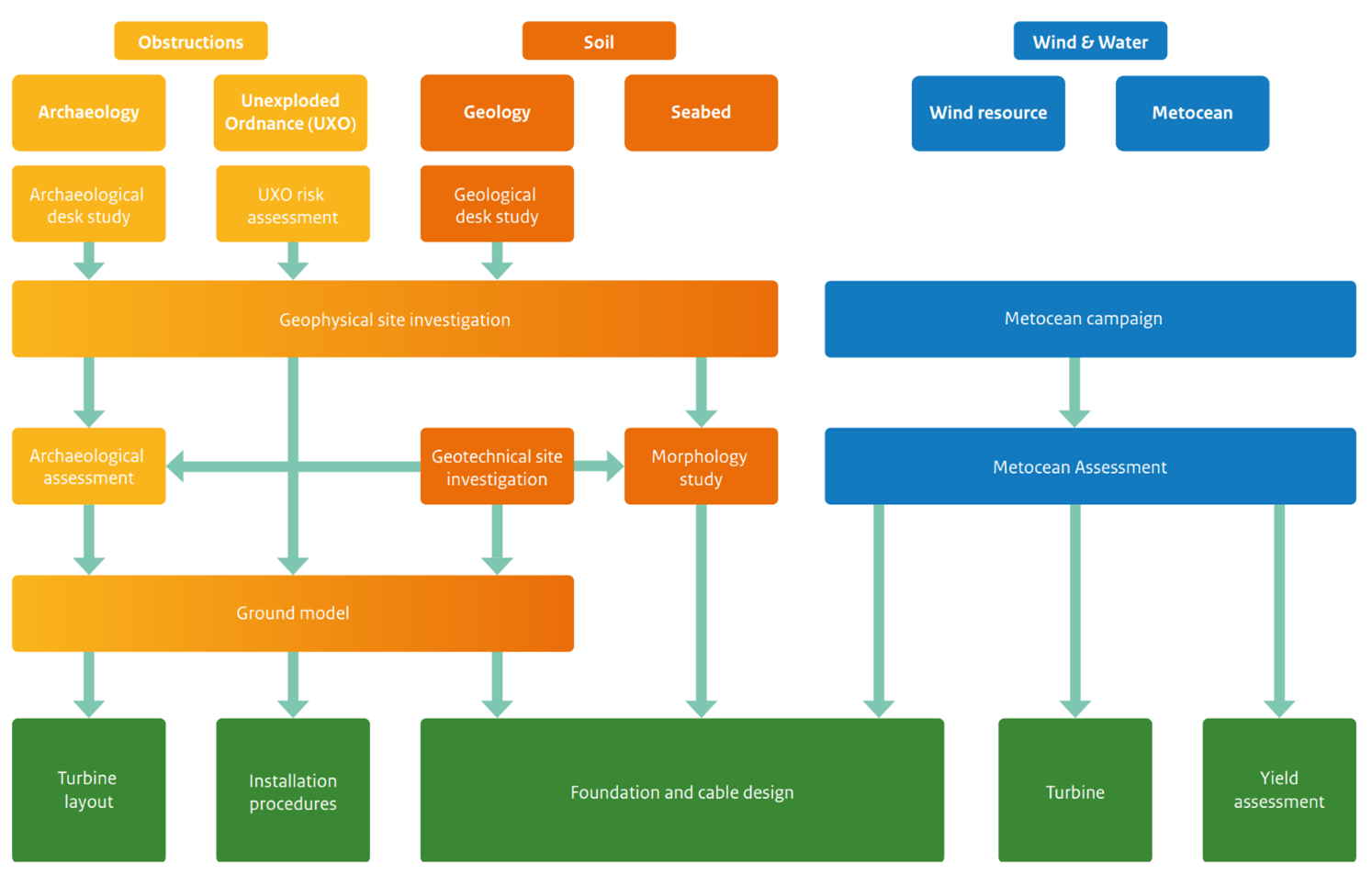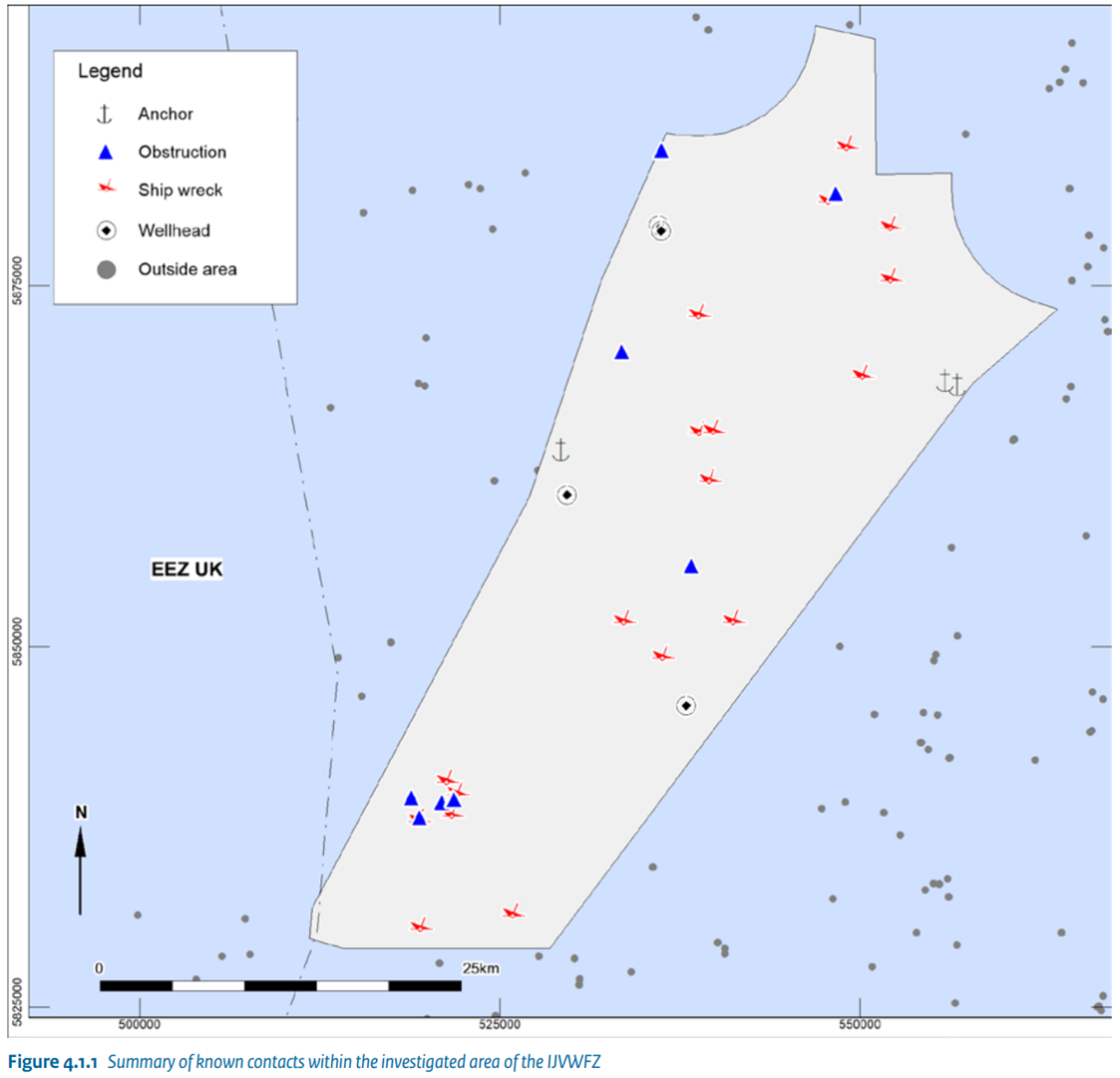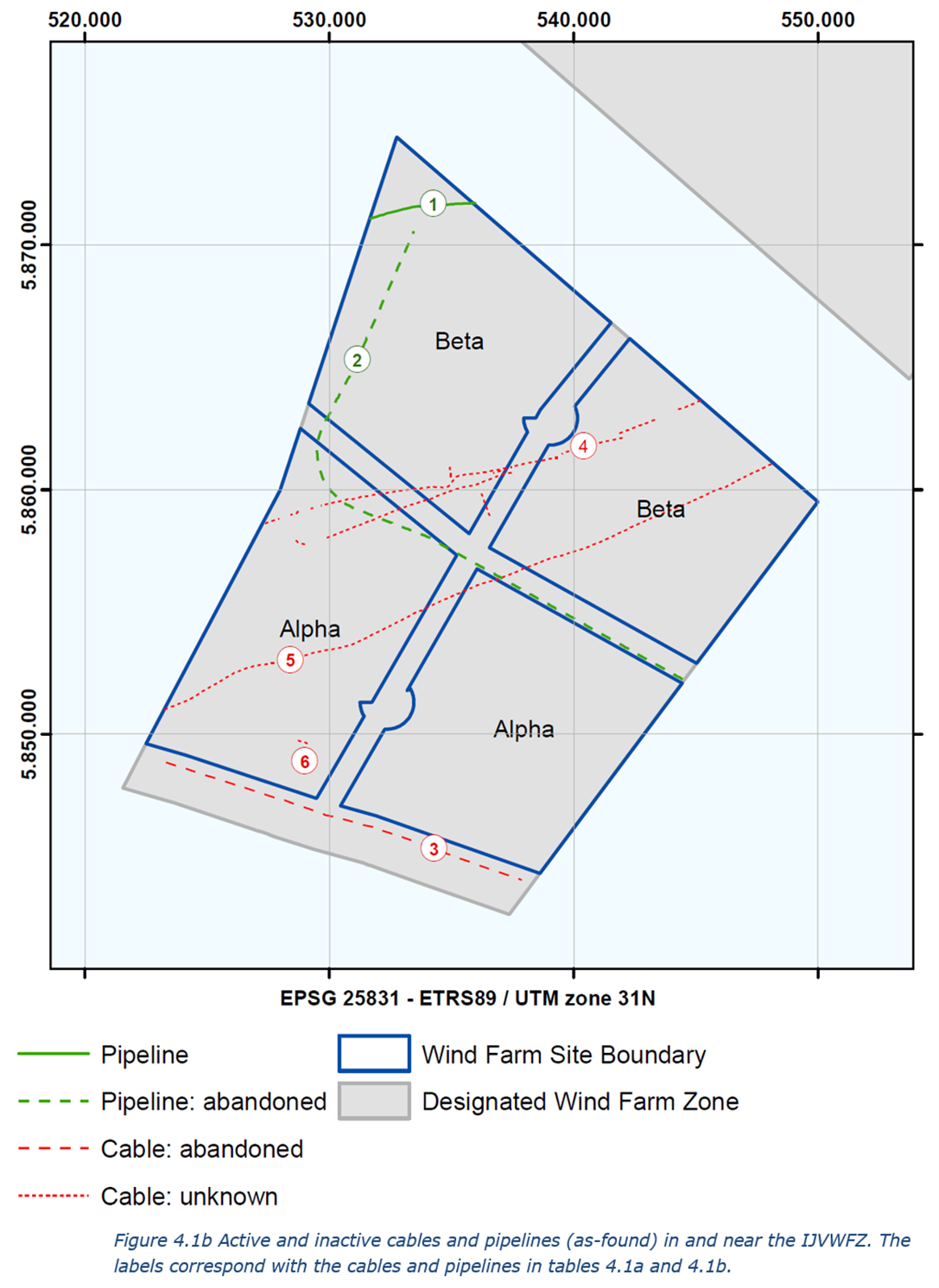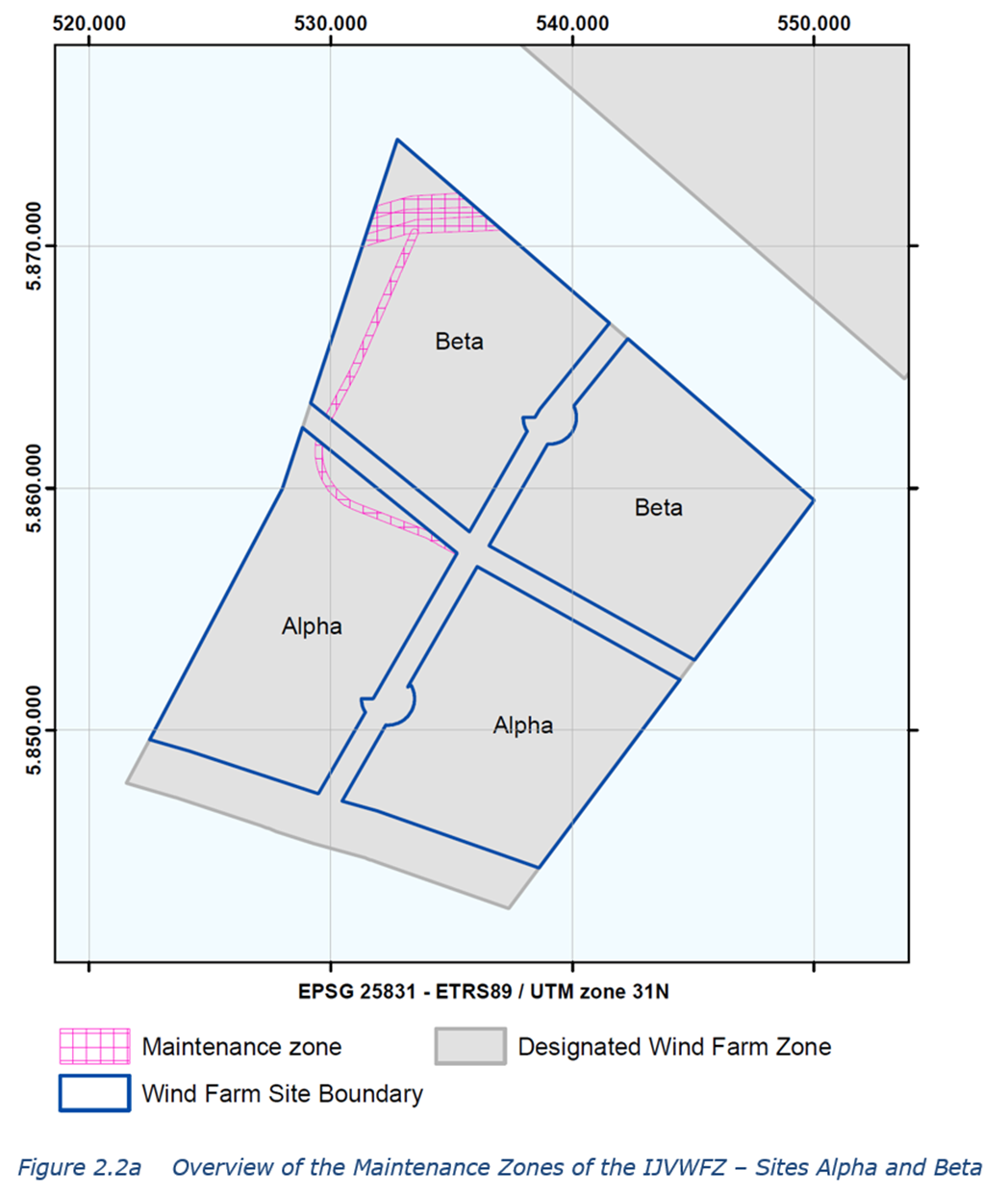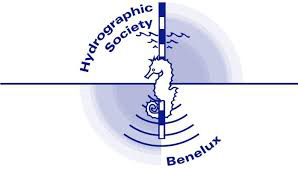An integral part of the site characterisation is the geophysical site survey. This survey contributes to the bathymetrical, morphological and geological understanding of a WFZ. The survey provides insights on seabed features such as sea floor materials, boulders, hollows, wrecks, debris, pipelines and cables. As such, it supplies essential information for the archaeological assessment, the ground model and the morphology study.
Periplus has been contracted by the Netherlands Enterprise Agency (Rijksdienst voor Ondernemend Nederland, RVO) to conduct the archaeological desk study, the archaeological assessment of the geophysical survey results, the geological assessment of the evolution of the paleo-landscape and to provide GIS services as part of the Netherlands Enterprise Agency GIS expert team. The GIS team assists in defining the complete and correct boundaries and coordinates that are essential for the correct buildout and successful operation of the offshore Wind Farm Sites.
An archaeological desk study determines whether any archaeological remains are expected in the WFZ and, if so, whether they could be impacted by the development of the planned wind farms. The archaeological desk study and archaeological assessment resulted in a list of coordinates of possible archaeological objects as well as the coordinates of possible ferrous objects (magnetic anomalies >50 nano Tesla). Around these objects a 100 meter safety buffer is created in order to make sure that the objects are avoided when designing the monopile locations. The locations of these to-be-avoided objects as well as the avoidance areas are shared in a so-called “memo coordinates and boundaries”.
Next to the possible archaeological and ferrous seabed features, the geophysical survey reveals, to a degree of certainty, the location of existing seabed infrastructure such as cables and pipelines. These features are called as-found cables and pipelines. Due to weather events and ocean currents cables and pipelines might gradually move horizontally and/or vertically on the seabed or get covered by sand. Therefore, the as-laid locations of these cables and pipelines are usually not the same as the as-found locations of cables and pipelines. The as-found locations of cables and pipelines in turn determine the maintenance zones of existing seabed infrastructure. During the design of an Offshore Wind Farm the wind turbine generators (WTGs) need to be placed and constructed in such a way that the blade tips are within the WFZ site boundaries but outside the maintenance zones.
An integral part of a WFZ is the offshore grid connection. In the Netherlands the transmission system operator (TSO) TenneT is responsible for the construction of the offshore grid connection system. This consists of the Offshore Substation platforms and the export cables connecting the Windfarm with the shore. A cable entry zone is defined and outlined in order to provide enough space to connect the export cables to the platform but also to connect the so-called Inter-Array Cables (IAC) of the Wind Turbine Generators to the platform.
At the start of the Offshore Wind programme in 2013 the Netherlands Enterprise Agency has realized that the centralization of data gathering efforts by a government representative authority would speed up the process, guarantee quality in data being considered in bids, and attract more potential bidders by reducing risk and decreasing initial investment costs. Partly thanks to this effort the Netherlands has achieved the 2023 ambitions on time, within budget and almost without subsidy: more than 4.5 GW of offshore wind energy. The offshore wind farms provide 15.8% of the current electricity supply for companies and people at home. That is more than we agreed 10 years ago in the Dutch Energy Agreement. And that is a great achievement.
At Periplus, we are pleased to play a role in supporting the Netherlands Enterprise Agency in the development of the Dutch Wind Farm Zones, including the IJmuiden Ver Wind Farm Zone (IJVWFZ), located 62 kilometres off the west coast of the Netherlands. This ambitious project aims to accommodate a total of 6000 MW of clean energy generation, marking a significant step towards a sustainable future. The IJmuiden Ver Wind Farm Zone project represents an important stepping stone towards the national offshore wind goal of 21 GW by 2030, as confirmed in the North Sea Programme 2022-2027. As Periplus we are excited to assist the Netherlands Enterprise Agency with our expertise and software in order to provide verified and accurate data essential for the permit tender process.
Periplus is looking forward to supporting the positive impact of this and future offshore Wind Farm Zones. Stay tuned for further updates as we continue to make strides towards a greener future!
